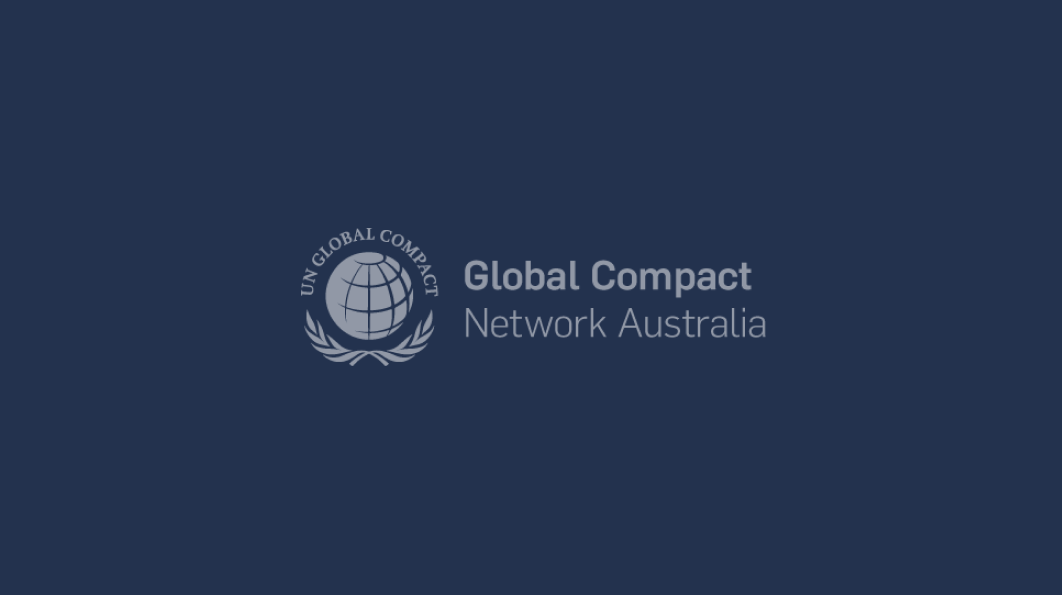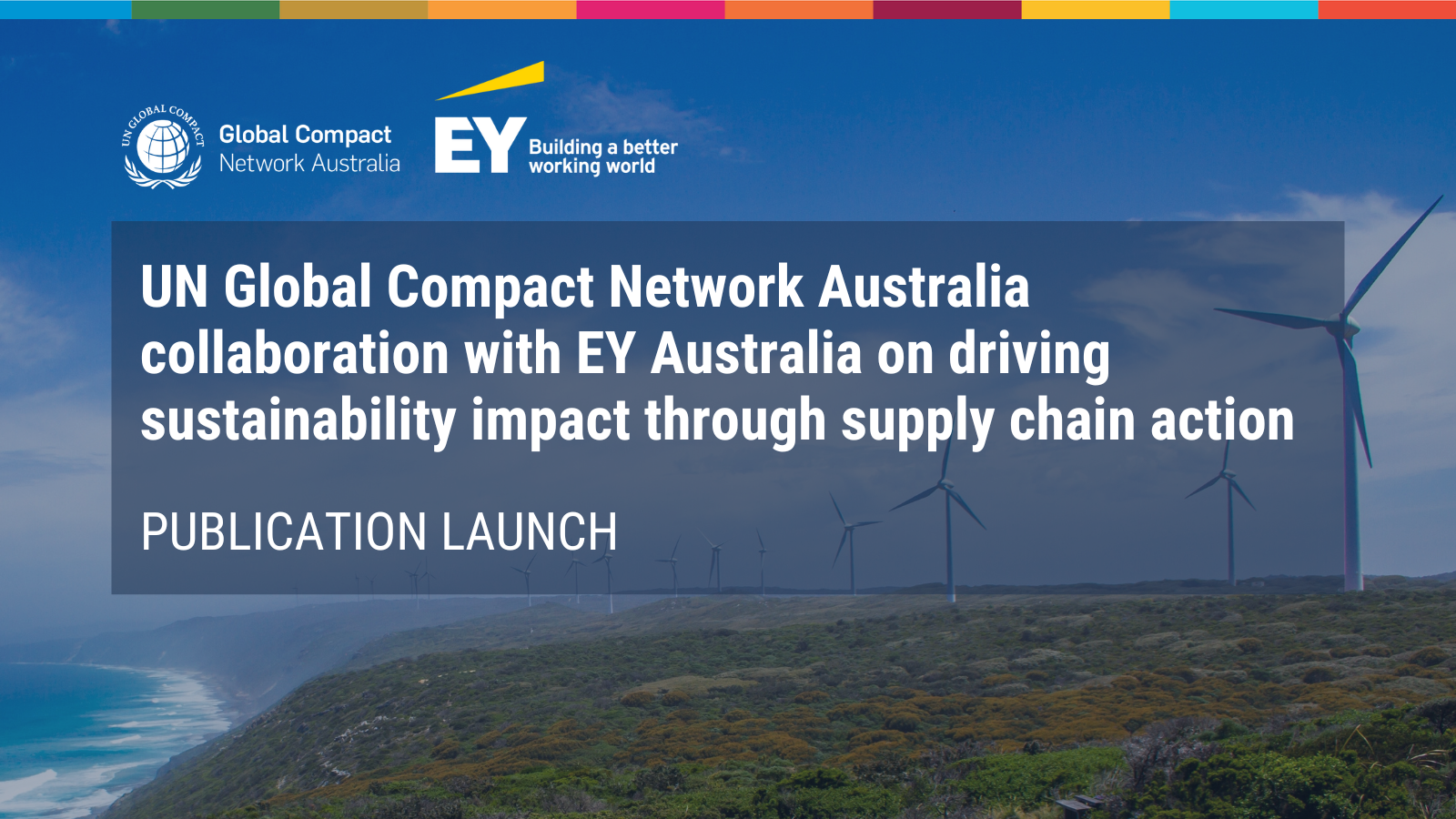
Environment & Climate Change, News, Resources
UN Global Compact & EY launch global State of Sustainable Supply Chains Report
UN Global Compact Network Australia | August 9, 2016
Today’s complex supply chains require transparency and collaboration to manage business risks and bring value to stakeholders.
EY teamed with the UN Global Compact to explore how companies are embedding sustainability in their supply chains by managing risks, and adopting corporate commitments to human rights, ethics, the environment and the communities from which they source goods and services. The report was previewed in Australia on 5 July at an event co-hosted by the Global Compact Network Australia and EY and launched globally on 8 August.
The State of Sustainable Supply Chains: Building responsible and resilient supply chains report highlights the views of more than 100 sustainability, supply chain and procurement specialists from 65 companies interviewed globally. It identifies leading practices to address common challenges, focusing on six key findings.
- While approaches vary by company, sector and geography – all companies interviewed are investing in sustainable supply chains. Workforce health and safety incidents, labour disputes, geopolitical conflicts, raw materials shortages, environmental disasters and new legislation in areas such as conflict minerals and modern slavery have contributed to the growing awareness of supply chain risks by customers, consumers, investors, employees and local communities.
- Corporate approaches are evolving from risk management to differentiation and creating shared value. Operational, financial, regulatory and reputational risks continue to be the major driver for supply chain sustainability. But established supply chain programs are evolving beyond regulatory compliance to focus on creating shared value with stakeholders, pursuing market differentiation, innovation, stronger and long-term relationships with customers, and easier access to capital.
- Accountability for supply chain sustainability resides primarily with procurement, supported by a range of different functions. Sustainability requirements, key performance indicators (KPIs) and assessment criteria are increasingly integrated in the business processes for selection, monitoring and incentivising of suppliers, and are managed by procurement and sourcing functions. Leading companies have embedded sustainability into their business models and across functions such as R&D, product design, legal, risk and finance, typically driven by strong support from the executive leadership.
- Leading companies work with their suppliers to go beyond compliance to capture opportunities through shared commitment. Companies are looking beyond auditing and monitoring minimum standards for supplier compliance, developing mutually-beneficial relationships with suppliers and guiding them toward improvement, investing in training and capability building (either individually or through industry collaborations) and providing incentives for the top performers. Leaders consider suppliers and contractors as an extension of their business and work with them towards shared commitments.
- Companies are leveraging technology and collaboration to increase visibility and enable greater influence in their supply chain. Achieving transparency down the supply chain was noted as the biggest challenge by most companies, reflecting the expectation of stakeholders that companies are accountable for the source of key goods and materials used in their products or services. Two ways are identified to address transparency: 1) technologies that allow data collection and referring requests to sub-tiers to provide information, and 2) working with suppliers to adopt advanced corporate responsibility themselves, such as adopting the UNGC 10 Principles, GRI or CDP reporting, so their own supply chain management approach drives improvement through the supply chain.
- Working with peers, industry associations, standard setters, and NGOs is critical for companies to achieve sustainability in the supply chain. Multi-stakeholder collaborations focused on a specific sector, geography, issues and commodities have proliferated in the past few years as companies recognise that tackling issues together is less costly, increases leverage with suppliers, facilitates knowledge exchange and helps gain credibility.
This study provides an overview of some of the leading practices in supply chain sustainability, as well as an indication of where we are heading and what companies will need to take into consideration going forward in order to their place as a business of tomorrow.
One particularly valuable outcome of the report is the development of a maturity model, identifying the typical attributes and approaches of companies from Basic to Improving, Established, Mature and through to Leading. In addition to mapping where the sectors interviewed sit on the scale, it provides companies looking to improve their own supply chain sustainability approach with a roadmap and trajectory toward leading practice.
We hope it will help your company identify business opportunities, useful approaches and tools, and provide the inspiration to promote sustainability across your value chains.
We would like to thank those companies who participated in interviews in Australia: AMP, Australia Post, Commonwealth Bank, Cotton On, GlaxoSmithKline, John Holland, Mirvac and Officeworks. We would also like to thank Jaana Quaintance-James (David Jones) and Nik Comito (Optus) for joining the panel discussion at the report’s preview event in Sydney.
Author
Sara Redmond-Neal, EY
Sara Redmond-Neal is a sustainable supply chain specialist in EY’s Climate Change and Sustainability practice. She has worked extensively with Australian businesses and government through EY and previously at ECO-Buy to embed environmental, human rights and ethical considerations in sourcing and procurement and improve performance throughout the value chain.
The views expressed in this article are the views of the authors, not Ernst & Young. This article provides general information, does not constitute advice and should not be relied on as such. Professional advice should be sought prior to any action being taken in reliance on any of the information. Liability limited by a scheme approved under Professional Standards Legislation.


